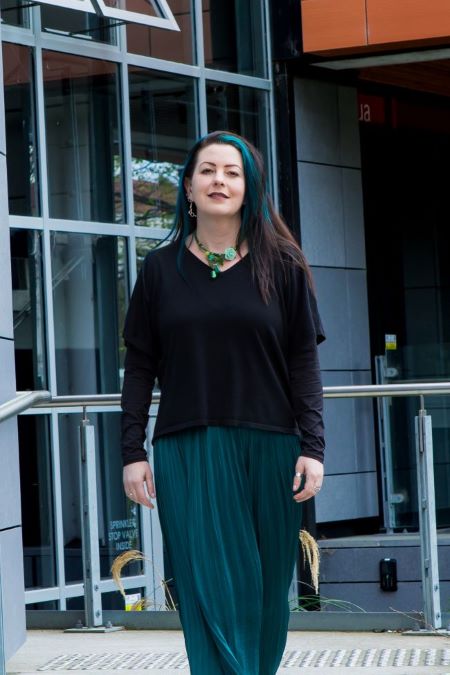For those who have not visited the country, the United Arab Emirates (UAE) is likely to be an unknown quantity – similar to an Arabian epic novel of noble men in flowing robes, picturesque desert and perhaps the odd camel.
For those who have cursory knowledge of the UAE, its significant oil and gas reserves and Dubai’s recent debt troubles may be the first matters that come to mind. Whatever camp they fall in, New Zealand businesses looking for new markets may not get too excited about either the grand fiction or the narrow view of the UAE.
But New Zealand business should get excited. The UAE is country on massive development path that has every intention of becoming an economy of importance.
With the recent announcement by the Minister of Foreign Affairs, Murray McCully, that New Zealand is to open an embassy in the United Arab Emirates it would appear the New Zealand Government agrees. The announcement follows the trade delegation to the UAE in April this year, one of the largest trade missions ever sent from New Zealand to any country.
Trade statistics certainly support the case for the new embassy. According to Statistics NZ’s “Global New Zealand – International Trade, Investment, and Travel Profile”, exports of goods to the UAE increased 140 percent between 2005 and 2009 and the UAE went from our 29th to 21st largest export market. Indeed, of the top 21 countries that New Zealand exports to, as at 31 December 2009, the UAE, Hong Kong and Taiwan were the only countries that do not have representation at an embassy or, for Commonwealth countries, high commission level.
So where do the export opportunities lie? The answer to that question is, in short, ‘it depends’.
The UAE is federation of seven Emirates governed by its 1971 Constitution. The Constitution divides power between the Federal and Emirate governments leaving each Emirate wide scope to operate its economy. Consequently, the economic focus of each Emirate is different. comparison of Abu Dhabi and Dubai, the two largest economies, provides an illustration.
Abu Dhabi has outlined its economic blueprint in policy document – Abu Dhabi Economic Vision 2030 (imagine starting with blank piece of paper and then detailing the creation of an economy from the beginning with sufficient budget to fulfil every ambition).
One focus of future economic growth is on promoting industries that have high barriers to entry. With 90 percent of the UAE’s oil and gas wealth it can afford to invest where most other countries cannot. For example, it is investing US$10 billion in creating an aerospace manufacturing facility and US$3.4 billion in establishing global high-tech semi-conductor business.
Abu Dhabi is also spending more than $500 billion on construction projects – building everything from railway system, roads, and power plants to commercial and residential dwellings.
In comparison, Dubai has focused on tourism, finance and logistics, its unofficial goal to become both the Hong Kong and Singapore of the Middle East/North Africa region. Dubai’s success with tourism is the biggest advertisement for the UAE’s economic growth – many will know of or have flown with Emirates Airlines, the Dubai-owned carrier, sponsor of myriad of sports teams and one of the few airlines to have generated significant profit during the global downturn.
Dubai also owns the third largest ports terminal operator (DP World) and its airport is now the fourth busiest international airport in the world with plans to increase capacity to 160 million passengers over the next growth period. Contrast this to Heathrow, the current busiest with 66 million passengers in 2009. This growth has occurred from practically nil base since the early 1980s. While Dubai’s much publicised debt concerns are matter of worldwide record, internally it is viewed as speed bump (albeit significant one) on the path of economic growth.
These descriptions of the two largest Emirates illustrate the size of opportunity in the UAE. Yes, the numbers are very large, but New Zealand exporters are used to exporting to large and complex markets, for example, the US or more recently China. The entire country is capacity building at micro and macro level – so if your business has goods or services that can contribute then it should find market here.
To date, New Zealand’s exports to the UAE have been from our traditional strengths where comparative advantage lies. Primary products constituted 84 percent of the exports in 2009. Milk powder exports, comprising almost 50 percent, increased 115 percent between 2008 and 2009 alone. With continuing UAE economic growth and good management by the existing exporters further increases will no doubt continue.
However, Kensington Swan, which has been operating in the region for the past six years and opened its Abu Dhabi office in January this year, sees niche opportunities on regular basis. For example:
• Water conservation is crucial issue as fresh water reserves are being depleted, problems of overuse occur and the country needs to rely on desalination and recycling.
• Farming is promoted by the government but occurs in desert environment. Accordingly, it requires expertise to assist with the promotion of farming in more sustainable way.
• The Federal government has introduced new energy-efficiency standards which will require substantial upgrade to air-conditioning systems.
• New Zealand wine is greatly under-represented in the hotels, which are permitted to sell alcohol in all of the Emirates except Sharjah.
Thus far, the export of New Zealand education services to the Gulf market has been big success story.
To add some trans-Tasman rivalry into the mix – the Australians are here (they opened their embassy in Abu Dhabi 10 years ago), and in force. There are number of Australian organisations and exports that are highly visible – from the writers’ casual observations. Australian beef is cheaper and more visible than New Zealand beef in supermarkets. Combine this with plenty of expats working in influential positions in government SOEs, Australians have become highly regarded.
Such is the opportunity, we would expect more New Zealand organisations to consider the UAE as an export destination. Indeed the opening of our embassy in Abu Dhabi may be precursor to more New Zealand firms looking to do good business in the region.
Of course, there are particular issues business must face before entering the UAE market and without thorough market research there can be challenges. Understanding the challenges is vital for New Zealand firms hoping for economic success in the UAE and broader Middle East region. For those New Zealand businesses seeking adventure it’s never too early to start writing the first chapter in their Arabian novel.
Richard Cathie is senior consultant and Mark Brown is an associate based in Kensington Swan’s Abu Dhabi branch. www.kensingtonswan.











